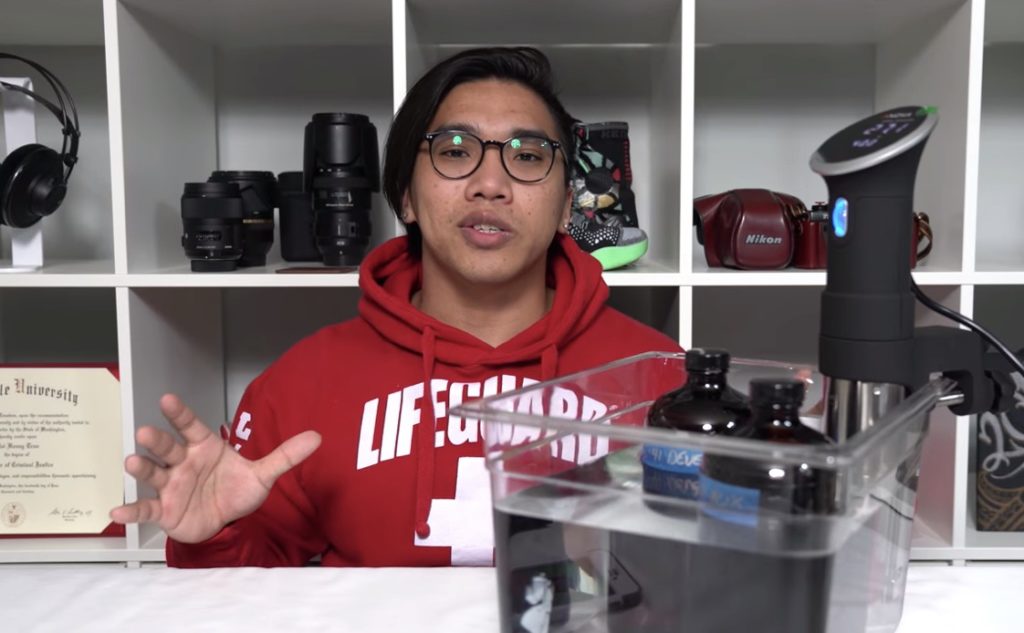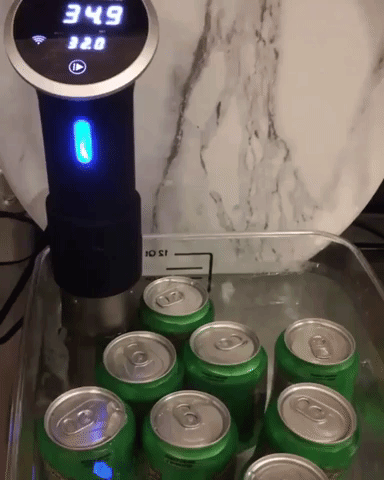Photo Developing
"The cost of development through a lab alone can cost more than the camera that you took the pictures with. I just can’t justify paying someone to develop my film when the process is rather simple. One option is to buy a film processor to help with development. Having a processor is great, but modern options are very expensive. A new processor starts around $1700 and can cost as much as $3800. This of course is the price of just the processor, not including other essential equipment that you’ll need to actually use with the processor to develop film. Enter, my Anova Precision Cooker." - #anovafoodnerd Hai Tran. See the whole technique here!
Reheating Mother's Milk
With an Anova Precision Cooker and its ability to heat within .01ºF/C, you can bring mother's milk to the exact temperature for it to mimic coming straight from the source. Photo Credit: Ali Marquis
Photo Credit: Ali Marquis
Proofing dough
Sometimes your house isn’t as suitable for proofing as you’d like it to be. Sure you could try to use your oven proof setting but you’re looking at around 160°-180°F at the lowest! That’s not proofing, that’s slow cooking. If only there were a device in your kitchen that can hold a precise temperature…oh wait! Check out how to proof dough and get to making bread at home with a sous vide assist.
Making yogurt
Rich and creamy, homemade yogurt is amazingly easy to make with sous vide. Just a couple of ingredients including milk and a few tablespoons of live culture commercially prepared yogurt, and you are well on your way to never buying yogurt again! Get the step-by-step recipe here!
Speed chilling
Whether you want to quick-chill your freshly-cooked meats or to get that bottle of white to the right temperature faster, your Anova can help with that! Circulating water chills much faster. For that reason, when you start with cold water, add ice, and run the Anova at its lowest setting, you can chill both wine and freshly-cooked food in a flash as the device circulates your water.
Heating sake
Staying in for sushi night? Heat your sake to the perfect drinking temperature, right in the bath. We like it between 105°F-110°F/ 40°C-43°C.
Decrystallizing honey
We hate when honey has sat on the shelf too long and gets crystallized and hard. Word on the street is to not heat over 104ºF/40ºC to preserve all of those enzymes, but if it is not a concern, then heating to 120ºF/48.9ºC sounds like the most effective temperature.

Photo credit: Jeff Riederer
Cold brew coffee
Waiting 12-24 hours for delicious cold brew coffee is a thing of the past. Unleash the power of Anova and deliver incredible sous vide cold brew coffee in a fraction of the time. Find out why sous vide coffee makes for a better brew with Anova here.

